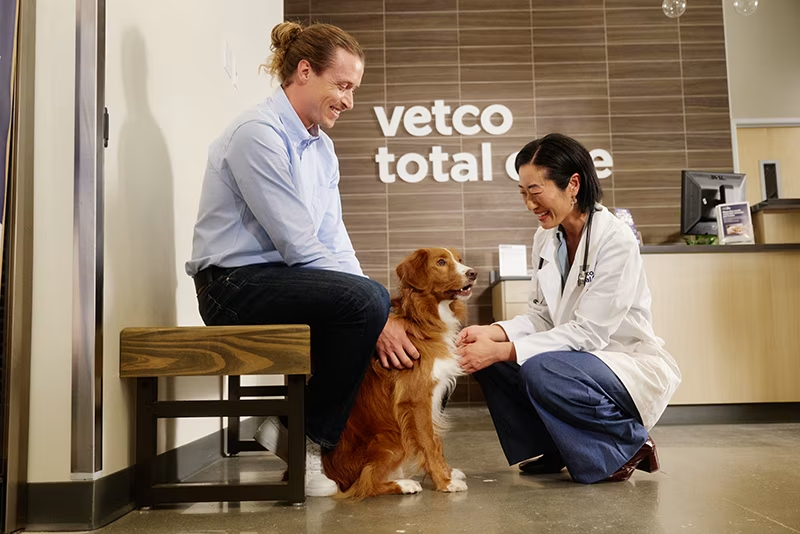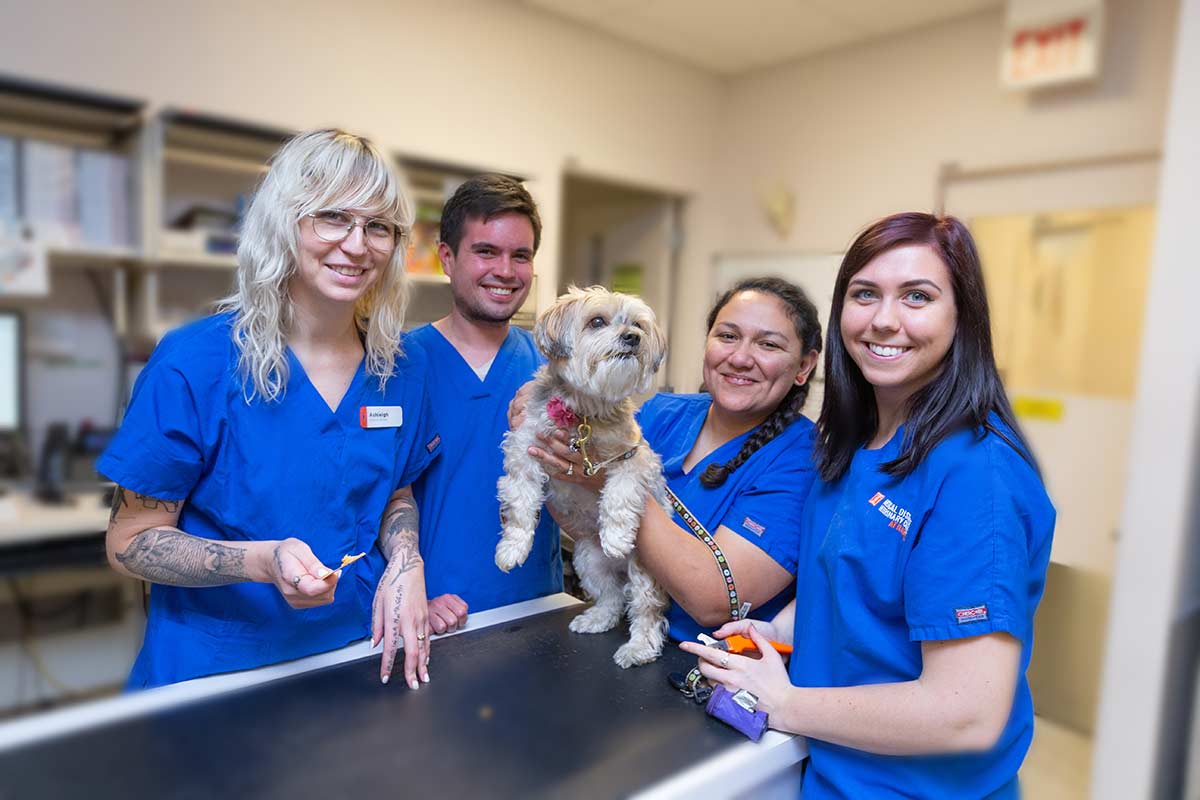All Regarding Veterinarian Surgery: Understanding the Importance of Expert Look After Your Pets
Vet surgical procedure is an important part of animal medical care. It encompasses various treatments, from routine elective surgeries to immediate treatments. Comprehending the ins and outs of these surgeries can assist animal proprietors make notified choices. The prep work, execution, and recuperation phases are essential for ensuring the health of pets. With proper knowledge, owners can browse the complexities of veterinary care. What elements should be thought about prior to a family pet undertakes surgical procedure?
Types of Vet Surgeries
When a family pet needs medical intervention, recognizing the various kinds of veterinarian surgical procedures can help animal proprietors make informed decisions. Vet surgeries can be generally classified right into 3 main kinds: optional, immediate, and emergency surgical procedures. Elective surgical procedures, such as spaying or neutering, are intended procedures that are not immediately lethal. Immediate surgeries, like those for foreign body removal, have to be executed soon but are not lethal in the minute. Emergency situation surgical procedures, such as those addressing serious trauma or internal blood loss, are critical and require prompt attention.Additionally, surgical procedures can differ in complexity, varying from minimally invasive laparoscopic procedures to much more extensive open surgeries. Each sort of surgical procedure lugs its own risks and recovery processes. Comprehending these groups allows family pet owners to involve in purposeful discussions with vets, leading to much better outcomes for their precious pets.
Getting ready for Your Animal's Surgical treatment
Planning for a family pet's surgical treatment involves a detailed checklist to assure all fundamentals are covered. Efficient interaction with the veterinarian is vital for understanding the treatment and any type of essential pre-operative actions - tplo surgery. In addition, having clear post-operative treatment instructions will certainly help proprietors offer the most effective assistance for their recuperating family pets
Pre-Surgery List Fundamentals
Assuring a smooth surgical experience for a family pet calls for careful prep work and interest to information. A pre-surgery checklist is crucial for pet owners to adhere to. First, validating the scheduled surgery date and time is essential. Proprietors should also verify that their animal has not eaten according to the veterinarian's guidelines, typically for 8-12 hours before surgical procedure. Gathering needed clinical records, including vaccination background, is necessary for the vet's testimonial. It is additionally recommended to prepare a comfy room at home for the family pet's healing after surgical treatment. Proprietors must have a strategy for transport to and from the veterinary facility, making sure that the pet is safe and secure and comfy throughout the trip. Complying with these steps can greatly enhance the surgical experience.
Connecting With Your Vet

Reliable interaction with the vet is essential for a successful surgical experience for animals. Proprietors must be prepared to discuss their animal's medical background, consisting of any pre-existing problems, medicines, and allergic reactions. This details helps the vet analyze threats and customize the surgical strategy as necessary. In addition, pet owners must ask questions regarding the procedure, anesthetic, and expected outcomes to assure they totally comprehend the process. Clearing up any type of doubts can alleviate anxiety for both the pet and the owner. It is additionally essential to connect any behavior adjustments or problems observed in the pet dog leading up to the surgery. Ultimately, clear discussion cultivates depend on and partnership, making sure that family pets get the best feasible care throughout their medical trip.
Post-Operative Care Recommendations
After discussing the surgery with the veterinarian, animal owners must concentrate on post-operative care instructions to facilitate a smooth recovery for their animals. These guidelines typically include monitoring the medical site for signs of infection, such as soreness or discharge. Pets might need to be kept tranquil and confined to stop extreme movement that might interrupt healing. Discomfort management is essential, so proprietors should adhere to the veterinarian's guidance on providing medicines. Additionally, nutritional restrictions may be advised to prevent stomach upset. Routine follow-up visits are essential to assure appropriate recovery and resolve any worries. By adhering to these post-operative treatment directions, family pet owners can greatly add to their pet's recovery and overall well-being.
The Surgical Refine Explained
The medical procedure for family pets incorporates important steps that guarantee their safety and recuperation. Pre-surgery prep work are essential for lessening risks, while post-operative care standards play an essential role in promoting recovery. Comprehending these parts assists pet dog proprietors navigate the surgical experience more effectively.
Pre-Surgery Preparations
Prior to a pet dog goes through surgical procedure, a number of vital prep work should happen to ensure a safe and successful procedure. A thorough veterinary evaluation is crucial to evaluate the family pet's overall health and identify any type of possible dangers. This may include blood examinations, imaging, or various other diagnostics. The vet will certainly additionally go over anesthetic choices tailored to the pet's details demands. Furthermore, pet dog owners are usually instructed to keep food and water for a defined time prior to surgical treatment to minimize the danger of complications throughout anesthesia. It's vital for proprietors to provide a total case history, including any medicines or allergies, making sure the surgical team has all required info. Correct interaction and adherence to pre-surgery guidelines can significantly improve the result of the treatment.
Post-Operative Care Guidelines
Correct post-operative care is important for ensuring a pet dog's recovery complying with surgical procedure. After the treatment, family pets need to be monitored closely for any type of signs of problems, such as extreme bleeding, swelling, or uncommon behavior. It is essential to comply with the veterinarian's guidelines pertaining to medications, including painkiller and prescription antibiotics. Family pets need to be kept in a peaceful, comfortable environment to minimize stress and anxiety and promote recovery. Limiting task is vital; short, leashed strolls might be needed, yet leaping or running ought to be prevented. Normal follow-up consultations must be scheduled to analyze the recovery animal care vet procedure. Additionally, the surgical website should be maintained clean and completely dry, with any indicators of infection reported to a vet promptly. Adhering to these guidelines enhances recuperation outcomes.
Anesthesia and Discomfort Monitoring
Reliable anesthesia and pain administration are vital components of veterinary surgical procedure, ensuring that pet dogs continue to be comfy and risk-free throughout the procedure. Veterinarians examine each family pet's individual requirements, considering variables such as age, weight, health status, and the kind of surgical procedure being performed.Anesthesia methods usually consist of a combination of pre-anesthetic medications, induction agents, and inhalant anesthetics, enabling exact control over the animal's degree of consciousness. Surveillance throughout surgical procedure is crucial; veterinarians continuously observe vital indications to attend to any kind of possible problems promptly.Pain administration strategies may involve opioids, non-steroidal anti-inflammatory medicines (NSAIDs), and anesthetics, tailored to the animal's particular scenario. This complex strategy assists decrease pain and promotes a smoother medical experience. By focusing on efficient anesthesia and discomfort monitoring, vet experts improve the overall welfare of pet dogs going through surgeries, ensuring they obtain the highest criterion of treatment.
Post-Operative Treatment and Recovery
Following surgical treatment, the emphasis shifts to post-operative care and recovery, which is crucial for making sure a pet dog's secure return to regular activities. During this duration, family pets require a peaceful, comfy environment to aid healing. Proprietors need to very closely monitor their family pets for any kind of indicators of discomfort or uncommon behavior.Veterinary standards typically include certain directions connected to drug administration, wound treatment, and nutritional modifications. It is important to stick to these recommendations to decrease issues and promote recovery. Family pets may need to be limited from energetic tasks, such as running or jumping, throughout their recuperation period (24 hour vet near me).Regular follow-up appointments with the vet enable monitoring of the pet dog's progression and prompt modifications to the treatment plan. Providing psychological support and companionship can additionally enhance a pet dog's recovery experience, helping to minimize stress and anxiety and stress and anxiety. In general, attentive post-operative treatment plays a significant role in accomplishing a successful healing
Identifying Difficulties After Surgery
How can pet owners determine issues after surgery? Understanding of certain indications is crucial for ensuring the well-being of pet dogs throughout healing. Usual signs include too much swelling, soreness, or discharge at the surgical website, which may signify infection. Additionally, consistent discomfort, shown by grumbling or hesitation to move, should motivate immediate interest. Adjustments in appetite or water consumption can also indicate problems; a decrease in these actions may indicate discomfort or distress.Moreover, pet dog proprietors need to monitor their family pets for any kind of unusual behavior, such as lethargy or trouble breathing, as these can be indications of significant problems. Throwing up or diarrhea adhering to surgery may require urgent vet evaluation. Identifying these complications early can substantially affect a pet dog's healing process, emphasizing the value of vigilance and prompt communication with a veterinarian for any worrying signs and symptoms.
The Role of Vet Professionals in Surgical Care
Vet professionals play a necessary role in ensuring the safety and security and success of surgical treatments for pets, especially complying with surgical treatment when keeping track of and care are vital. These specialists include veterinarians, vet professionals, and support staff, every one of whom add specialized abilities to the medical process.Before surgical procedure, vets carry out complete evaluations to assess the family pet's health and wellness, guaranteeing that any kind of hidden conditions are managed. During the treatment, the medical view it team gives anesthetic, preserves sterilized settings, and monitors crucial indications, all crucial for decreasing risks.Post-operative care is just as considerable; veterinary experts observe for issues, handle discomfort, and guide proprietors on healing techniques. Their competence enables them to acknowledge early indications of distress or infection, guaranteeing timely treatment. Inevitably, the joint initiatives of vet experts in medical treatment their website promote a secure setting, promoting the health of pets throughout the medical trip.

Frequently Asked Concerns
Exactly how Do I Pick the Right Vet Surgeon for My Pet?
Choosing the ideal veterinary surgeon entails looking into credentials, reviewing evaluations, and evaluating the center's atmosphere. It is important to mirror on the cosmetic surgeon's experience with specific treatments and their interaction design when making a decision.
What Prevail Misconceptions About Vet Surgeries?
Common mistaken beliefs about veterinarian surgical procedures consist of ideas that they are always dangerous, unneeded, or just for emergency situations. Lots of pet dog proprietors undervalue the advantages of precautionary procedures and the ability involved in vet surgical treatment.
Just How Much Will My Pet's Surgery Expense?
The expense of a pet's surgery can vary considerably based upon factors such as the kind of treatment, the vet's experience, and geographic location (tplo surgery for dogs). Usually, expenditures vary from a few hundred to numerous thousand dollars

Can My Family Pet Eat Before Surgery?
Prior to surgery, it is normally encouraged that pet dogs refrain from eating for a specific period. This fasting helps in reducing the threat of problems during anesthesia. Owners ought to consult their veterinarian for specific directions customized to their pet's requirements.
What happens if My Pet Has Pre-Existing Wellness Issues?
When a pet has pre-existing health problems, it's essential for the vet to analyze these aspects before surgery. This analysis warranties appropriate preventative measures are taken, decreasing threats and enhancing the pet's total safety and security throughout the treatment.
Comments on “When Is tplo surgery the Right Choice for Dogs With Cruciate Injuries?”